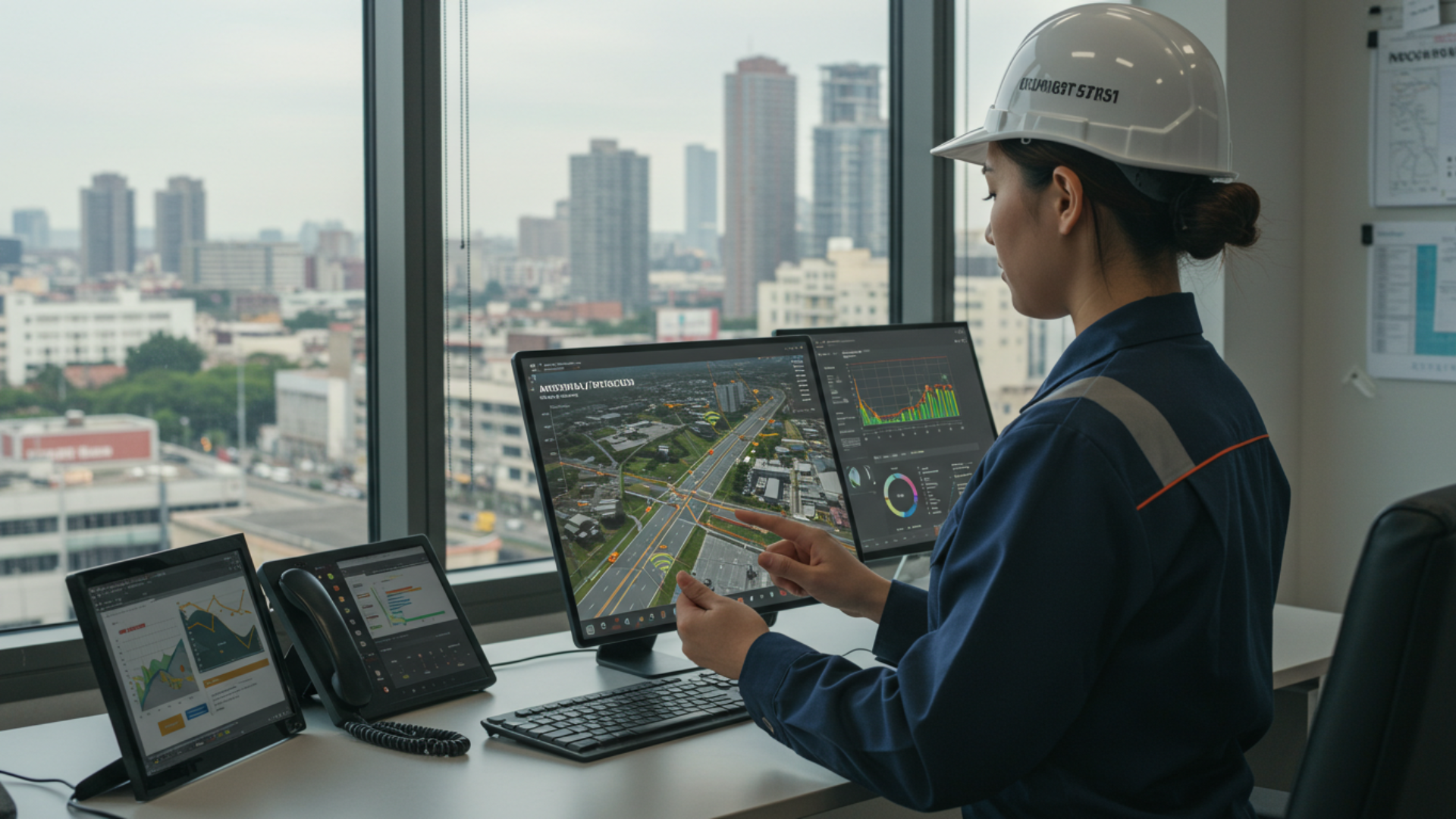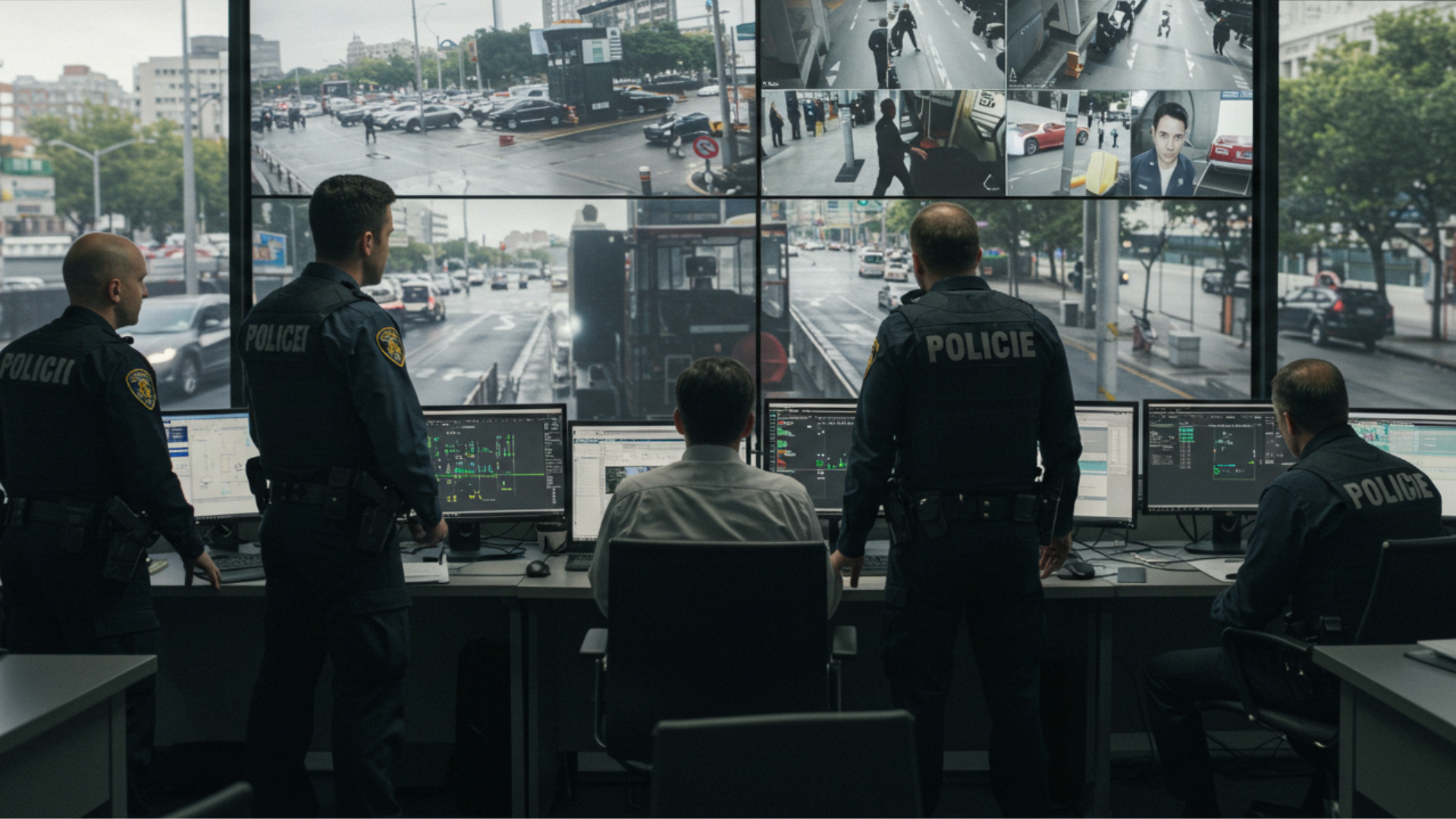6 Ways Anomaly Detection Transforms Public Works Agencies
by Shahzaib Shafqat, Last updated: April 28, 2025, Code:

Walking through a dark neighborhood because a streetlight has been out for weeks brings unease. Hearing news about an avoidable bridge collapse sparks creeping anxiety. These aren’t abstract fears—they’re the everyday realities of aging infrastructure and overstretched public works teams.
Anomaly detection, driven by computer vision and video analytics, offers a solution. By proactively identifying problems through surveillance cameras and drone footage, public works agencies can address issues before they escalate. This isn’t just about technology; it’s about transforming cities' operations, ensuring safety, and earning public trust.
Below, we explore seven key ways anomaly detection is revolutionizing public works.
1. Proactive Maintenance with Structural Deficiency Detection
Structural integrity is the backbone of any urban environment. Yet, countless bridges, roads, and buildings deteriorate over time, often without warning signs visible to the naked eye. Ignoring these deficiencies can result in catastrophic failures, threatening lives and draining public funds with emergency repairs.
Traditional inspections are time-consuming, expensive, and prone to human error. Enter anomaly detection. In real-time, advanced AI systems analyze video data from surveillance cameras and drones to identify structural deficiencies, such as cracks, corrosion, or foundation shifts.
This approach prevents costly disasters, extends the lifespan of infrastructure, and demonstrates a commitment to public safety. The benefits extend beyond economics. When citizens see proactive maintenance efforts, their confidence in local governance grows.
2. Real-Time Streetlight Monitoring for Safer Public Spaces
Streetlights are more than just utilities—they’re guardians of public safety. A well-lit street deters crime, reduces accidents, and fosters a sense of community. However, maintaining these systems is an ongoing challenge. Streetlights malfunction for numerous reasons, from electrical faults to weather-related damage.
AI-powered anomaly detection offers a game-changing solution. By monitoring streetlights through drones or connected cameras, these systems identify malfunctions the moment they occur. Real-time detections help maintenance teams, enabling immediate action to restore lighting.
Consider a scenario in which a key arterial road experiences a series of streetlight failures. Without anomaly detection, these outages might go unnoticed until residents file complaints, a reactive approach that leaves public spaces vulnerable. However, real-time monitoring flags the issue instantly, and repairs can be dispatched before public safety is compromised.
Moreover, this technology optimizes resource allocation. Maintenance teams no longer need to conduct routine inspections of functioning systems, freeing them to focus on areas requiring immediate attention. Over time, this increases efficiency and reduces costs.
3. Tackling Illegal Dumping for Cleaner Communities
Illegal dumping isn’t just an eyesore—it’s a serious problem with far-reaching consequences. Piles of trash attract pests, create health hazards, and degrade the environment. They also send a powerful message of neglect, eroding community pride and trust in local governance. Despite these risks, catching perpetrators in the act has historically been a needle-in-a-haystack challenge.
Anomaly detection changes the game by monitoring high-risk areas for illegal dumping activity. AI-powered surveillance systems can identify unusual patterns, such as vehicles stopping in restricted zones or objects being discarded, and immediately alert authorities. This enables swift intervention to prevent waste from accumulating.
The impact is both immediate and long-term. Communities plagued by chronic dumping often see a ripple effect: when one site becomes a dumping ground, others soon follow. Anomaly detection halts this cycle before it begins, preserving public spaces and preventing costly cleanups.
For instance, a city might deploy cameras in frequently targeted areas like vacant lots or alleyways. When the system detects an incident, enforcement teams can act quickly, issuing fines or citations. Over time, the deterrent effect reduces the frequency of dumping, improving the community's overall aesthetic and safety.
4. Preventing Vandalism and Preserving Public Aesthetics
Vandalism is more than a nuisance—it’s a sign of a disorder that can have cascading effects on community morale and safety. Left unaddressed, vandalism can tarnish a city’s image and erode trust in local governance.
Anomaly detection offers a proactive defense against this pervasive issue. By monitoring public spaces in real-time, AI-powered systems can identify acts of vandalism as they occur. Surveillance cameras equipped with anomaly detection algorithms can recognize unusual behavior, such as loitering near restricted areas or spray-painting, and notify authorities immediately.
This rapid response prevents damage from escalating and sends a clear message that public spaces are monitored and protected. For example, a transit authority using anomaly detection could catch someone defacing a subway station before significant damage occurs. Cleanup crews can address the issue promptly, minimizing the visual impact and restoring the area to its original state.
The benefits extend beyond aesthetics. Well-maintained public spaces make residents feel safer and more connected to their communities. Tourists are more likely to visit, boosting local economies.
5. Analyzing Traffic Patterns to Enhance Crosswalk and Pathway Design
Crosswalks and pathways are vital for urban infrastructure, yet their design often exceeds user needs. Poorly placed crosswalks can lead to jaywalking, while narrow pathways create bottlenecks that disrupt pedestrian flow. These design flaws compromise safety and convenience, undermining the effectiveness of public infrastructure.
With anomaly detection and computer vision, public works agencies can analyze traffic patterns in unprecedented detail. By tracking pedestrian and bicycle movements, these systems identify areas where existing infrastructure is insufficient or poorly utilized. For instance, a crosswalk at a low-traffic intersection might be relocated to a busier area to serve more users.
This data-driven approach extends to pathway design as well. AI can pinpoint locations where congestion frequently occurs, prompting planners to widen pathways or add alternative routes. Similarly, it can identify areas where pathways are underused, allowing resources to be redirected to more critical projects.
The result is infrastructure that aligns with how people use urban spaces. Well-placed crosswalks and pathways enhance safety and improve the overall traffic flow, making cities more walkable and bike-friendly.
6. Identifying Safety Concerns with Real-Time Usage Data
Safety is a cornerstone of public infrastructure, yet it’s often compromised due to outdated or incomplete data. Public works agencies struggle to address hazards effectively without understanding how people use urban spaces.
For example, an intersection with frequent pedestrian activity but no designated crosswalk poses a significant risk of accidents. Similarly, bike lanes that merge abruptly with vehicle traffic create dangerous situations for cyclists. These safety concerns aren’t always apparent in traditional planning processes, leaving gaps in the urban landscape.
AI-powered anomaly detection addresses these issues by providing real-time insights into traffic patterns. Surveillance cameras equipped with computer vision can monitor pedestrian and bicycle activity, flagging areas where safety concerns arise. For instance, high volumes of jaywalking at a particular intersection might indicate the need for additional crosswalks or pedestrian signals.
By identifying these patterns early, public works teams can implement targeted interventions to enhance safety. This might include installing bollards to protect bike lanes, redesigning pathways to reduce congestion, or improving lighting in high-traffic areas.
The ability to analyze usage data in real-time ensures that safety measures are both proactive and data-driven. This reduces accidents and builds trust within the community, showing that public agencies prioritize citizen well-being.
Conclusion: A Safer, Smarter Future for Public Works
Anomaly detection isn’t just a technological innovation—it’s a transformative approach to public works management, redefining how cities address challenges in real-time. Traditional methods of monitoring and maintaining public infrastructure often rely on reactive problem-solving, which can lead to costly delays, inefficiencies, and even risks to public safety.
This proactive approach ensures that public spaces remain safe, clean, and resilient against immediate hazards and long-term wear and tear. Whether identifying bridge cracks, detecting streetlight malfunctions, or analyzing pedestrian traffic for better infrastructure planning, anomaly detection empowers cities to operate smarter, faster, and more efficiently.
As urban environments grow, adopting cutting-edge technologies like anomaly detection is no longer an option but necessary to build sustainable and thriving communities.
People Also Ask
What is anomaly detection, and how does it apply to public works?
Anomaly detection uses AI to identify unusual patterns or deviations from expected behavior, enabling public works agencies to spot and address issues like structural damage or vandalism.
How can anomaly detection improve public safety?
Anomaly detection prevents accidents and enhances community safety by identifying hazards in real time, such as failing infrastructure or malfunctioning streetlights.
Is anomaly detection cost-effective for small municipalities?
Yes, it reduces long-term maintenance costs by identifying problems early, making it a valuable investment even for smaller budgets.
What kind of infrastructure issues can anomaly detection identify?
It can detect cracks, corrosion, vandalism, illegal dumping, and streetlight malfunctions, among other visible issues.
Can anomaly detection help in emergencies?
Absolutely. Real-time alerts enable quicker responses to emergencies, minimizing risks and damages.
What tools or technologies are used for anomaly detection?
Surveillance cameras, drones, and AI-driven video analytics are commonly used to monitor and analyze infrastructure and public spaces.
How does anomaly detection support urban planning?
It provides data on structural health and usage patterns, helping urban planners design resilient and sustainable infrastructure.
What are the challenges in implementing anomaly detection systems?
Challenges may include initial setup costs, integrating existing systems, and training staff to use the technology effectively.
How quickly can anomaly detection systems identify issues?
These systems work in real time, providing immediate alerts for prompt intervention.
What are the long-term benefits of using anomaly detection?
Enhanced public safety, reduced maintenance costs, and improved community trust are key long-term benefits.
Jump to
You May Also Like
These Related Stories

5 Ways Anomaly Detection Helps Law Enforcement Agencies Fight Crime

Why Enterprises Are Adopting Domain-Specific AI Agents


No Comments Yet
Let us know what you think